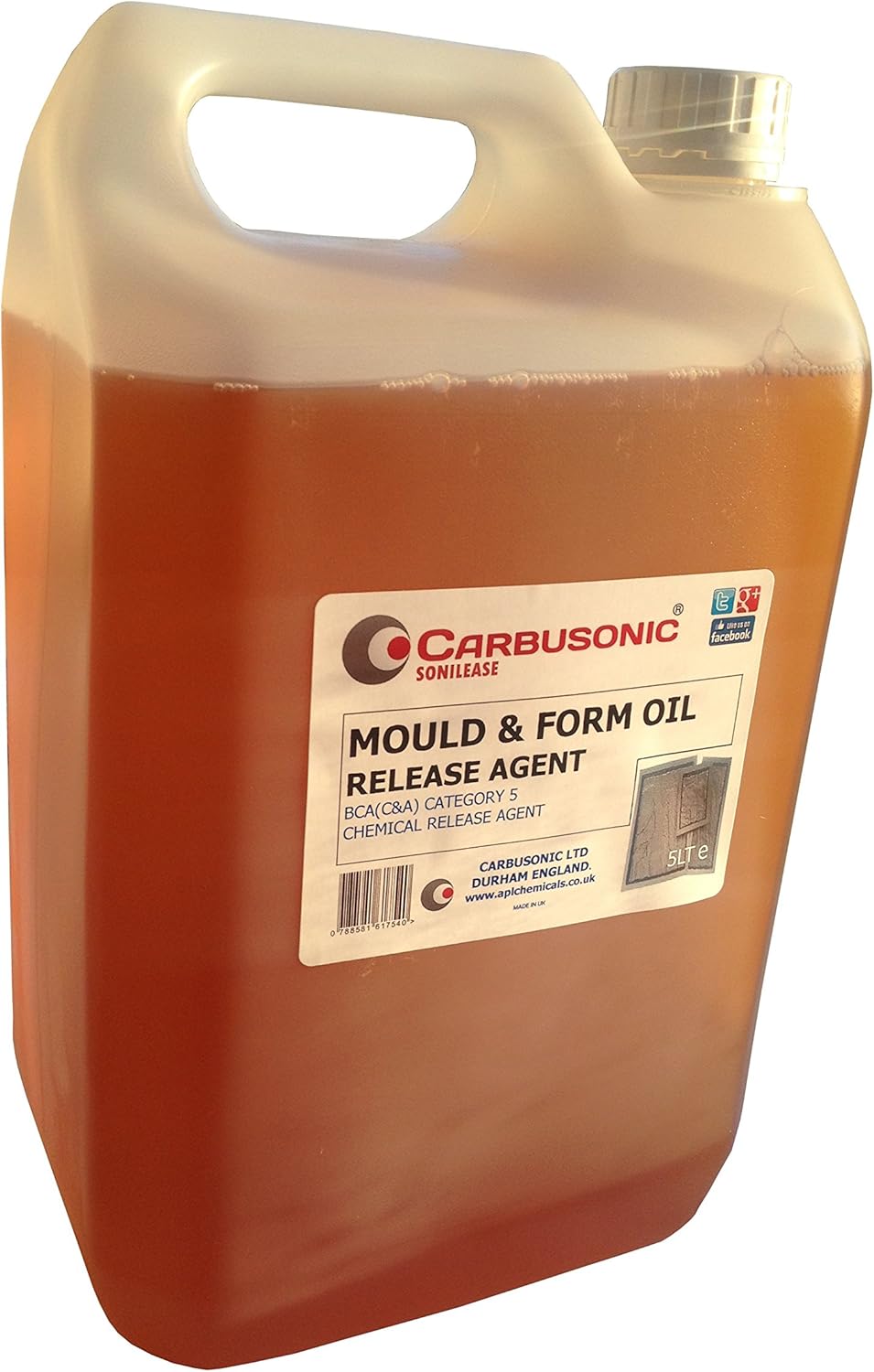About this deal
You can often tell whether or not the mould has got into the wood as stains tend to linger even after trying the soap and water method. Mould oils play an essential role in enabling efficient production processes, enhancing product quality, and extending the life of moulds in diverse industries such as manufacturing, construction, automotive, and plastics. What mould oils can you supply?
If you don't fancy making up your own solution and aren't anti-chemical, there are products available to buy that are designed specifically for removing mould from wood. Speed//STRIKE Formwork Release Agent meets the maximum capacity of VOC content for form release compounds of 450 g/l. Directions Surface Preparation
THORCAST Mould Oil is a formulated blend of mineral oils with additives and a degree of surfactant designed to work as a concrete release oil for demoulding concrete from all types of formwork moulds. It can be used on a wide range of metal, proprietary timber, ply and other formwork materials and coatings, however if using on plastic or rubber moulds consideration should be given to using our Norsekem Teknistrip. Formulated to give optimum release and quality of finish to concrete over a wide range of mix designs. Product is low hazard and not labelled as flammable. Mould is dangerous and can cause all kinds of health issues, from skin rashes to breathing problems. For this reason, when removing mould spores from wood, protect yourself by wearing a mask, eye goggles and long-sleeved clothing —if you have protective clothing you could put on over your usual clothing it will be even better. You should also wear rubber gloves. Effects a clean positive release, which reduces labour costs, cleaning time and possible damage to formwork.
There should not be any free oil on the wood surface. The form release agents that are good for wooden formwork are not always suitable for steel formwork. And hence the shuttering oil or form release agents should be chosen based on the type of formwork that is to be used for construction. Our Mould Oil helps ensure that formwork remains free of concrete deposits is therefore an essential task and an efficient and powerful cleaning agent is a vital product to get the job done.Applying mould oils is a flexible process that can be accomplished through various methods such as spraying, brushing, or wiping onto the mould surface. The choice of application method depends on factors like mould type, accessibility, and the consistency of the oil being used.
Condensation can be a major culprit when it comes to mould on timber. (Image credit: Getty) Removing mould from bare wood The performance of shuttering oil is largely dependent on the type of formwork that is being used. For wooden formwork, straight refined, pale, paraffin-based mineral oil and oil-phase emulsion have been successfully used. The oil that is chosen should be capable of penetrating the wood to some extent while leaving the surface slightly greasy to touch. However, before any mould problems can be fully resolved, it is vital to understand what causes dampso you can work out where the problem is originating. Damp and condensation are both prime causes of mould on all kinds of areas of the house, from walls and ceilings to wooden furniture and even fabrics such as curtains. This is a water-based mould releasing agent which gives clean and stain free high-quality concrete. It is available in a sprayable form and ready to use as a direct application on required places. It should be applied in light film either by brush or mould oil sprayer. If it is over applied, excess oil should be drained before it dries. Pools of DSO cannot be allowed to dry as it causes surface retardation of concrete.
Standard Carriage Rates
Product is supplied ready for use do not dilute. All formwork surfaces should be clean prior to application. Apply a thin uniform coating to the formwork surface avoiding over application. Spraying is the preferred method of application using a sprayer such as a Mesto Ferrox Plus 3585P or Mesto Profi Plus 3270P with an 8001 Nozzle fitted , however brushes or rollers may be used. Ensure any excess is mopped up as over application can cause dusty concrete, pay particular attention to the bottom of vertical shutter for run off. Clean all form surfaces thoroughly prior to application. Remove all rust, scale and/or previously used form release agents from the forms, in accordance with good concrete practices. It is imperative when using new timber forms of all types (plain wooden, plywood, rough cut etc.) that Speed//STRIKE be applied and reapplied until complete saturation has been accomplished prior to first use. Application The main purpose of mould oils is to make it easier and cleaner to release the finished product from the mould, while also maintaining the integrity of the mould. Here are some key points about mould oils:
 Great Deal
Great Deal 